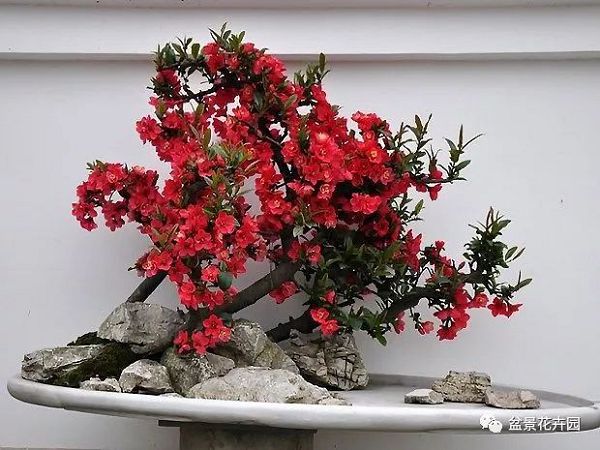Introduction to maintenance Technology of Flower Bonsai in Summer
Summer is hot and rainy, which is not only the peak season for the growth of some flowers, but also the dormant period for some flowers. In order to make flowers go through this stage smoothly, the management should be strengthened in the aspects of watering, shading, prevention and control of diseases and insect pests.
First of all, the summer temperature is high, water evaporation is fast, should be more watering every day, such as watering once in the morning and evening. At the same time, in the high temperature season, in addition to jasmine, rose and other exuberant flowers, it is generally not suitable to apply fertilizer, especially the cuckoo that enters the semi-dormant period and the dormant bulbous flowers such as cyclamen and freesia.
Secondly, for some semi-overcast and negative flowers, avoid high temperature and direct sunlight in summer. Shading measures should be taken and water should be sprayed to cool down. Even drought-tolerant plants such as cacti are at risk of being burned when the temperature exceeds 38 ℃. In addition to daily watering, cuckoos should also spray water on the leaves and the ground to keep moisture and cool down. But there are often heavy rains in summer. After the basin soil is stagnant, nutrients are easy to be lost, so the basin should be tilted to drip out of Rain Water after rain.
Finally, the muggy summer is also the season with high incidence of diseases and insect pests. It is necessary to remove the diseased branches and leaves in time, supplemented by drugs for prevention and treatment. Such as monthly and summer prone to black spot disease and powdery mildew, the former with Bordeaux liquid, the latter with carbendazim, once a semimonthly spray. Orchids are prone to anthracnose in plum rain and high temperature seasons. in addition to improving ventilation and light transmission, topiramate can be sprayed every 10 days when the disease occurs.
The respiration of potted flowers is exuberant in summer, which requires good permeability of potted soil. Therefore, the basin soil should not be watered when it is not dry, so as not to affect the air permeability, but it should be watered immediately and must be thoroughly watered after drying. In summer, the basin soil is often cracked because it is too dry, so watering can not be completed at once, otherwise the water leaks straight through the cracks, and most of the basin soil is still very dry. Wait a moment after the first watering and water again after the soil cracks are closed.
If you forget to water for many days, resulting in plant drought and wilting, do not rush to water, first move the potted flowers to a cool and ventilated place, spray the leaves with a spray can for 2 or 3 times, wait for the leaves to slow down, then a small amount of water, and so on after the root system resumes water absorption function, and then thoroughly watered. Careful watering in midsummer and cold winter
Water temperature has a direct effect on the root physiological activity of flowers. If there is a great difference between water temperature and soil temperature (more than 5 ℃), watering will cause a sudden change in soil temperature and damage the roots, but affect the absorption of water by the roots, resulting in physiological drought. Therefore, watering is better when the water temperature is close to the soil temperature, especially in winter and summer. In winter, it is best to store the water indoors for a period of time, or slightly add warm water to raise the water temperature to 15: 20 ℃, and then irrigate. In summer, you should avoid watering in the hot sun and high temperatures at noon.
Related
- What if the leaves of potted flowers turn yellow?
- Florescence Control of several Flowers
- Anti-freezing technology and post-freezing nursing technology of flowers
- What is the classification of flowers? What are the common methods of flower classification?
- Prevention and control of alkali and acid damage of flowers in courtyard
- Technology of Anti-freezing and restoring growth of Flower seedlings in greenhouse and greenhouse
- How does flower fertilization not hurt the root? Fertilization technology of flowers
- Key points of disinfection in flower greenhouse
- Several pesticides that are banned or used cautiously in flowers
- How to fertilize the flowers that watch the leaves?



